Speaker
Description
The goal of the project is to Improve existing astrogeodetic measurement methods of the institute of geodesy and geoinformatics and adapt them for possible dual applications.
The results of the project will help understanding the effect of anomalous refraction on vertical deflection measurements performed with a digital zenith camera (DZC).
To achieve the highest possible level of accuracy of DZC measurements, efforts should be made to eliminate or minimize the effects of error-causing factors such as anomalous refraction. Studies have been conducted around the world to explain
anomalous refraction, as it is a major source of error in astrometric observations. A particularly extensive study has been conducted by Taylor (2013). Possible causes of anomalous refraction include the rippling of atmosphere layers with different density, horizontal gradients of atmospheric layer density, and others,but there is no conclusive explanation for the origin of anomalous refraction. However, it is very likely that its origin could be up to a height of 60 m above the ground.
Within the framework of the project, several meteo sensors and a drone (UAV) for lifting the meteo sensor to a height of up to 100 m have been purchased. Typically, one DZC measurement session lasts 45-70 minutes (average about 50). This is the time required to "hold" the meteo sensor in the air to obtain information about the atmospheric processes taking place during the measurement session.
A space object optical tracking system for positional astrometric observations has been developed at the LU GGI. Currently, the first optical observations of satellites (geostationary and flying in high Earth orbits (above ~ 10,000 km)) have been made. Evaluation of the alternative system applications showed that it is possible to adapt the image processing and analysis and mechatronics control algorithms used to process images of space objects and track their trajectories. New application is possible - optical identification of low-flying objects such as drones, by searching objects in the sky background images by specific colour, contrast, configuration, and motion. The drone purchased within the framework of the proposed project will be used to develop a low-flying object identification solution.
Within the project it is planned to perform:
Recording of meteo parameters during DZC VESTA measurements;
Processing and interpretation of the obtained data, development of recommendations – describe conditions under which it is possible to minimize the impact of anomalous refraction;
Development and adaptation of optical object identification software for various tasks;
Acquisition of optical images of low-flying objects for testing identification software.
The recommendations developed during the project will be used not only by LU GGI researchers performing vertical deflection measurements with VESTA, but also by users of other zenith cameras in the world.
The achieved results will be the basis for higher technological readiness level (TRL) research for the development of solutions for the identification of moving objects. The implementation of the project will increase the competence and competitiveness of researchers at the University of Latvia at the international level, facilitating the attraction of foreign funding and involvement in international scientific cooperation projects. The equipment purchased for the implementation of the project after the project will be used to ensure and strengthen the research capacity of the LU GGI, as well as to serve for the preparation and implementation of other research and applied project applications.
The research and methodology developed during the project will be applied in future measurements of zenith cameras. International cooperation in this field will be encouraged.
Acknowledgements:
Project “Accuracy improvement of the astrogeodetic measurements and development of their dual application” is carried out thanks to the donation of “MikroTik”, which is administered by the University of Latvia Foundation

